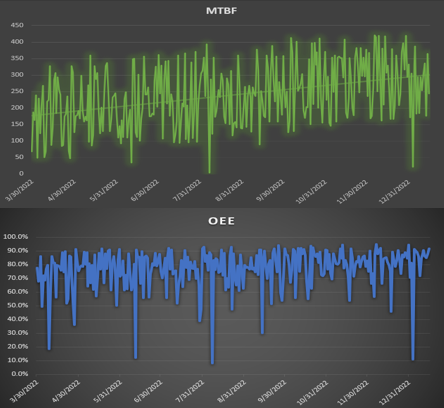Reliability Engineering Analytics Platform

What Was This About?
A global leader in consumer packaged goods had a suite of patented tools for OEE analysis and reliability engineering that needed significant re-engineering to prevent the tools from falling into disuse. The project was a 7-year effort that included doing massive software redevelopment while carefully supporting thousands of users across multiple releases as development continued in parallel.
What I Did
I joined the project after some preliminary efforts that provided a partial solution. I created the internal architecture and user interface as a rich desktop client application. I operated as solo developer for 4 years, developed 12 of the 20+ analytical tools, and shepherded the product through its first three releases. Starting in year 5, I trained three new developers on product internals and led them through another three years of development. I personally did a lot of the tough internal work needed to provide advanced features in a reliable and efficient way.
Technologies, Tools and Features
The technology stack was kept simple to facilitate a focus on application features: a Windows desktop application using C#, WPF, MVVM, SQL Server Stored Procedures, REST APIs and the Telerik UI for WPF component toolkit.
The application consisted of 20+ analytical tools based on a common input data format, which included line events, production runs, and defects. Some of the principal tools were:
- Loss Analysis. A detailed analysis of production losses including availability, rate loss and quality losses.
- Comparisons of across production lines and plants to identify best-in-class practices.
- Changeover Analysis. Detailed analysis of outages and slowdowns traceable to line changeovers.
- Gap Analysis. Tracking of actual performance against targets set at the failure-mode level for each unit operation.
Among the main technical challenges were:
- Dynamically cleaning and assigning reporting levels to raw datasets
- Restructuring old and complex parameter estimation algorithms
- Building extensive features for tracking data problems to the source and reporting on data quality
- Automatically upgrading stored datasets when new features were added to the application
Outcomes
Implementation of the platform enabled a resurgence in the practice of reliability engineering across 125 production plants globally. Increased use of the tools and methodology generates millions in cost savings each year. The application now has 10,000+ users around the world and is being prepared for external marketing by porting it to a web-based platform.